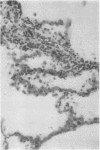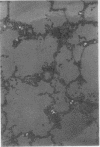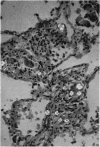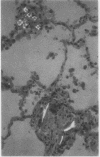Abstract
The lungs of eight drug addicts dying as a consequence of their habit have been examined. All showed the presence of small amounts of talc emboli and five the presence of starch emboli. Talc was invariably associated with a marked foreign body reaction which was insignificant in association with starch. Animal experiments showed very rapid (90% in 24 hours) removal of maize starch emboli; such rapid removal in man would explain the lack of a foreign body response. Quantitation of the amount of starch present in lungs from two of the cases gave values of 1·5 and 5·2 g. The higher amount could have been a contributory factor in the sudden death of the addict. The amounts of talc seen were not sufficient to be of clinical significance.
Full text
PDF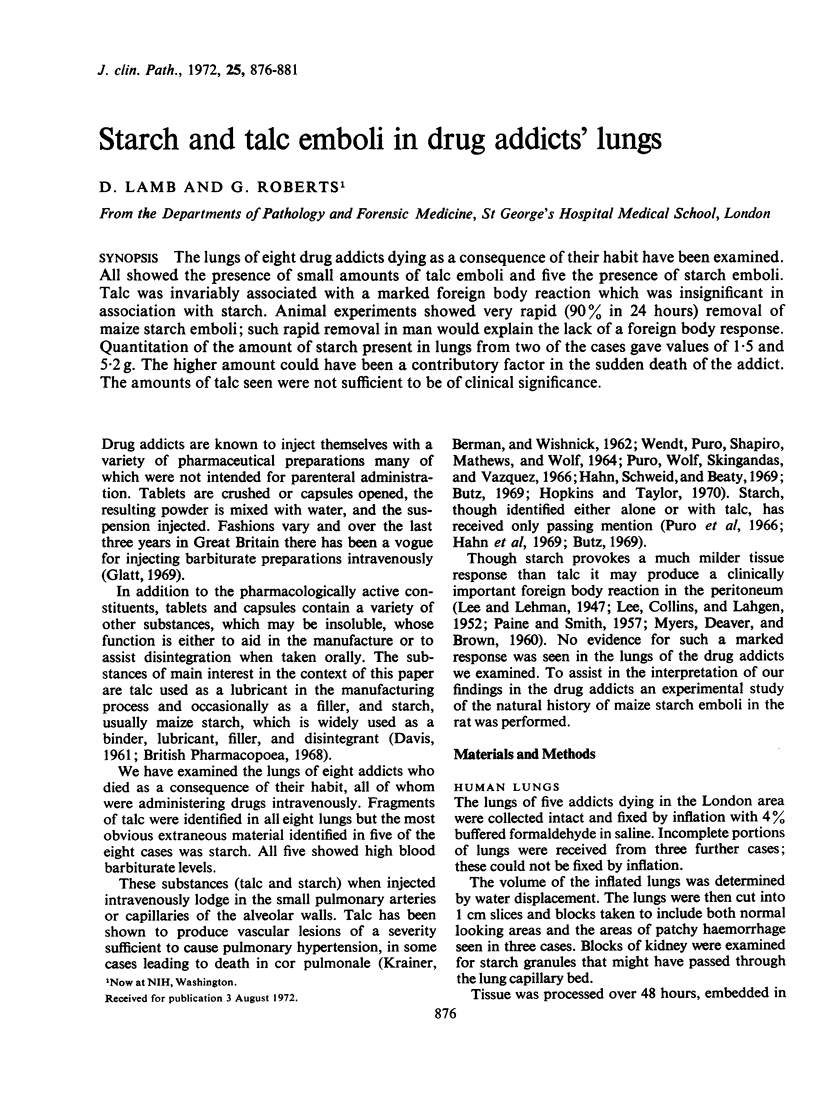
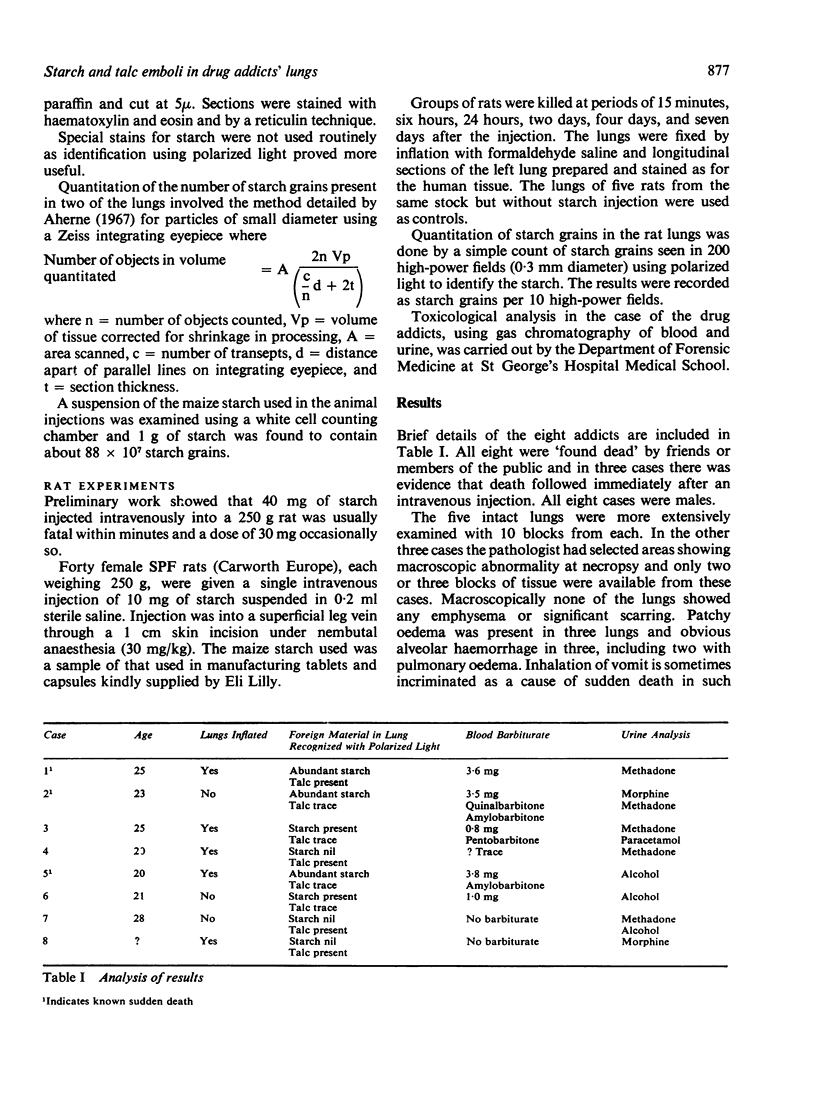
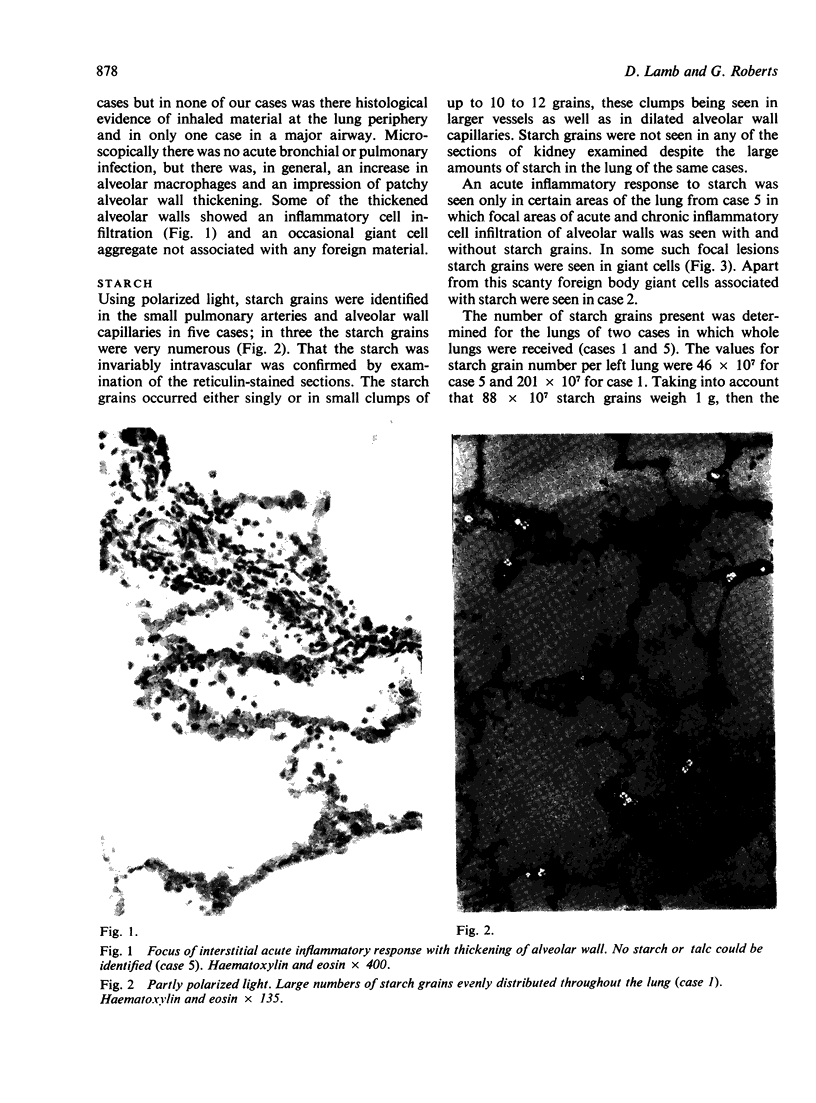
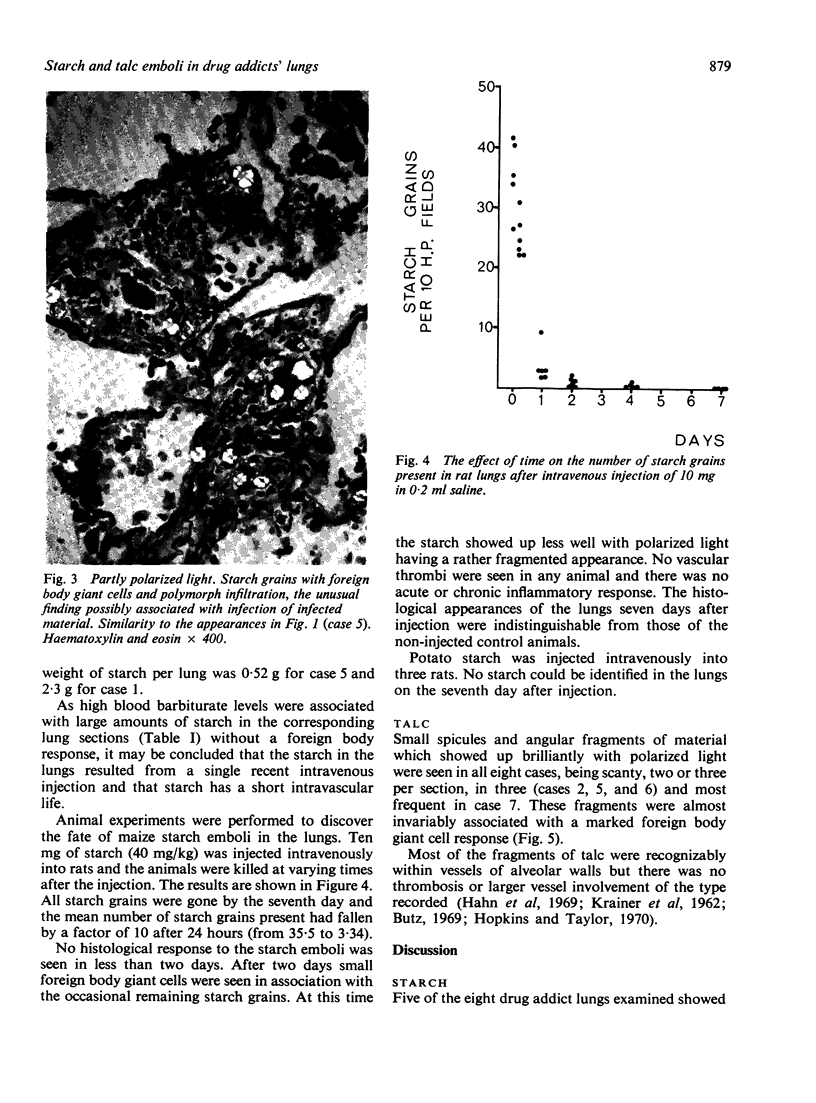
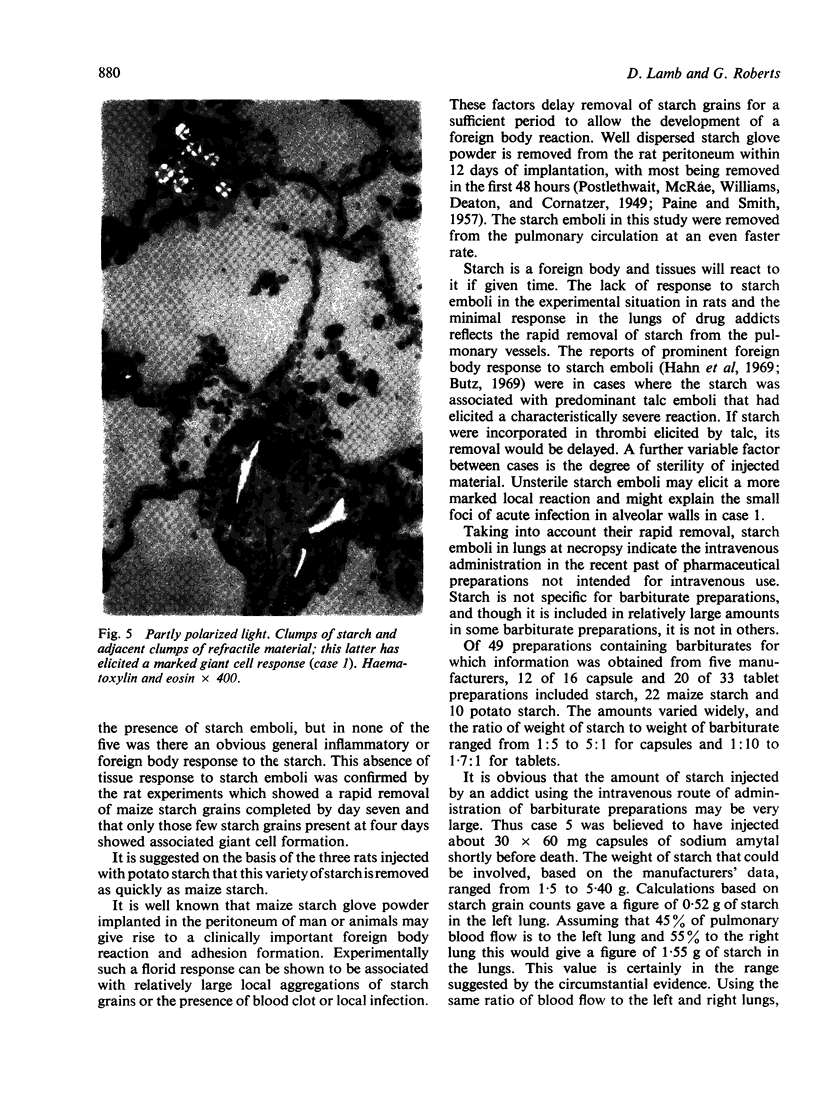
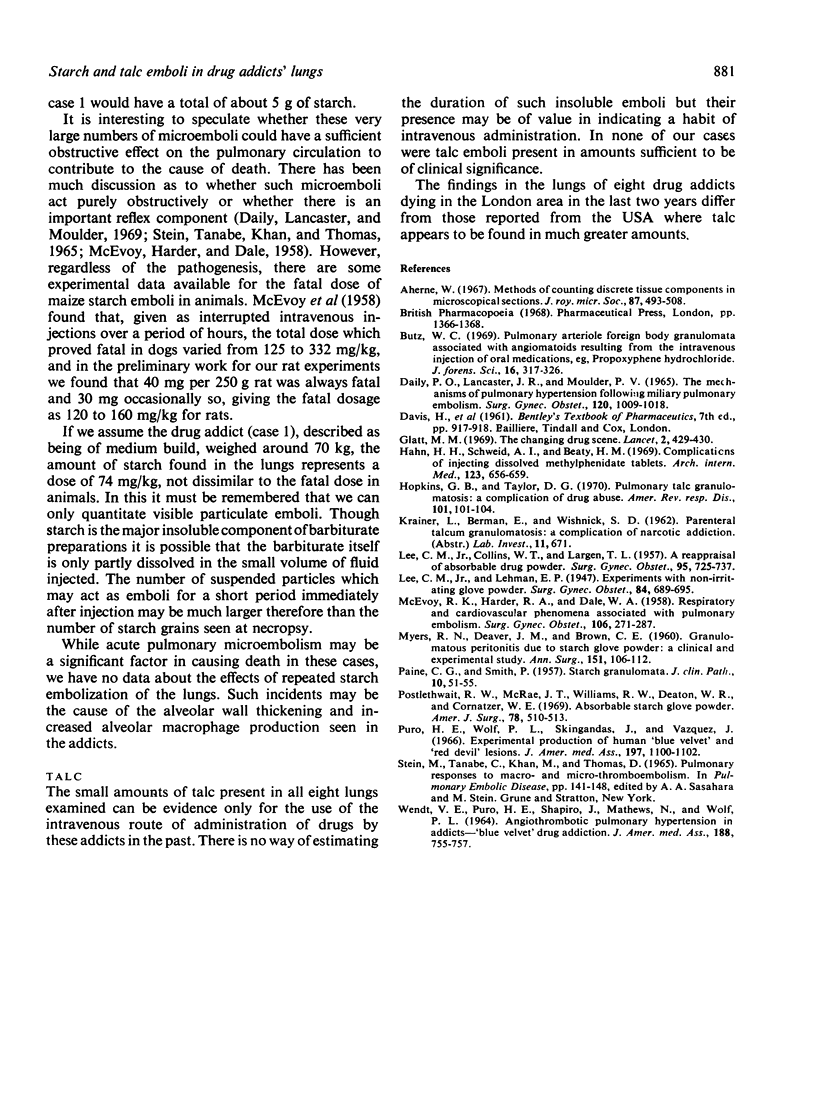
Images in this article
Selected References
These references are in PubMed. This may not be the complete list of references from this article.
- Aherne W. Methods of counting discrete tissue components in microscopical sections. J R Microsc Soc. 1967;87(3):493–508. doi: 10.1111/j.1365-2818.1967.tb04529.x. [DOI] [PubMed] [Google Scholar]
- Butz W. C. Pulmonary arteriole foreign body granulomata associated with angiomatoids resulting from the intravenous injection of oral medications, e. g., propoxyphene hydrochloride (Darvon). J Forensic Sci. 1969 Jul;14(3):317–326. [PubMed] [Google Scholar]
- DAILY P. O., LANCASTER J. R., MOULDER P. V. THE MECHANISM OF PULMONARY HYPERTENSION FOLLOWING MILIARY PULMONARY EMBOLISM. Surg Gynecol Obstet. 1965 May;120:1009–1018. [PubMed] [Google Scholar]
- Glatt M. M. The changing British drug scene. Lancet. 1969 Aug 23;2(7617):429–430. doi: 10.1016/s0140-6736(69)90129-9. [DOI] [PubMed] [Google Scholar]
- Hahn H. H., Schweid A. I., Beaty H. N. Complications of injecting dissolved methylphenidate tablets. Arch Intern Med. 1969 Jun;123(6):656–659. [PubMed] [Google Scholar]
- Hopkins G. B., Taylor D. G. Pulmonary talc granulomatosis. A complication of drug abuse. Am Rev Respir Dis. 1970 Jan;101(1):101–104. doi: 10.1164/arrd.1970.101.1.101. [DOI] [PubMed] [Google Scholar]
- LEE C. M., Jr, COLLINS W. T., LARGEN T. L. A reappraisal of absorbable glove powder. Surg Gynecol Obstet. 1952 Dec;95(6):725–737. [PubMed] [Google Scholar]
- LITTLE P. A., OLESON J. J., WILLIAMS J. H. Growth studies on Polytomella agilis. Proc Soc Exp Biol Med. 1951 Nov;78(2):510–513. doi: 10.3181/00379727-78-19122. [DOI] [PubMed] [Google Scholar]
- MYERS R. N., DEAVER J. M., BROWN C. E. Granulomatous peritonitis due to starch glove powder: a clinical and experimental study. Ann Surg. 1960 Jan;151:106–112. [PMC free article] [PubMed] [Google Scholar]
- McEVOY R. K., HARDER R. A., DALE W. A. Respiratory and cardiovascular phenomena associated with pulmonary embolism. Surg Gynecol Obstet. 1958 Mar;106(3):271–287. [PubMed] [Google Scholar]
- PAINE C. G., SMITH P. Starch granulomata. J Clin Pathol. 1957 Feb;10(1):51–55. doi: 10.1136/jcp.10.1.51. [DOI] [PMC free article] [PubMed] [Google Scholar]
- Puro H. E., Wolf P. L., Skirgaudas J., Vazquez J. Experimental production of human "blue velvet" and "red devil" lesions. JAMA. 1966 Sep 26;197(13):1100–1102. [PubMed] [Google Scholar]
- WENDT V. E., PURO H. E., SHAPIRO J., MATHEWS W., WOLF P. L. ANGIOTHROMBOTIC PULMONARY HYPERTENSION IN ADDICTS. "BLUE VELVET" ADDICTION. JAMA. 1964 May 25;188:755–757. doi: 10.1001/jama.1964.03060340053017. [DOI] [PubMed] [Google Scholar]



